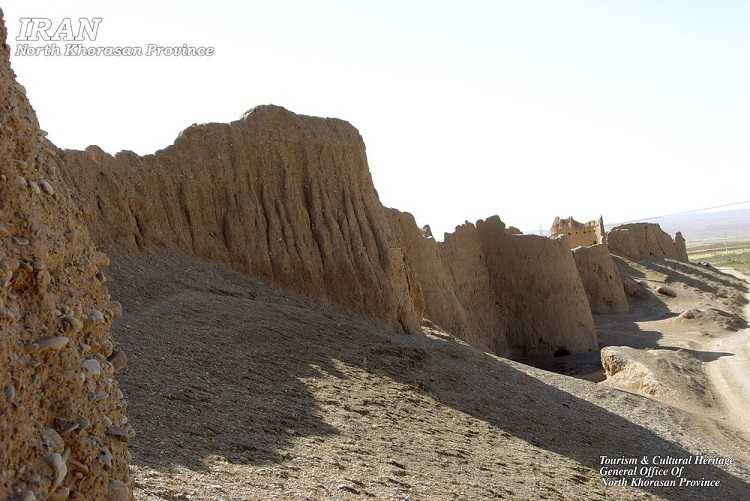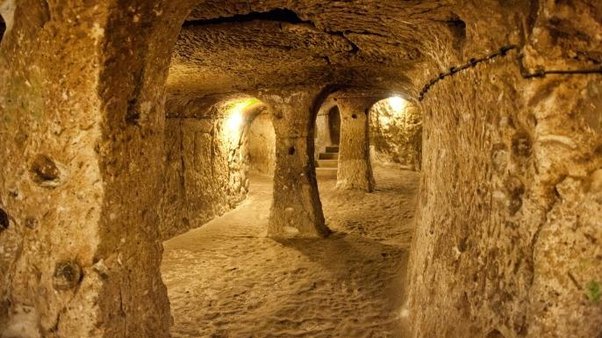In Bam village of Esfarayen county in northeast Iran, a routine road construction project has led to an exciting discovery of a vast network of underground corridors linked to the nearby fortress of Shahr-e Belqeys (City of Belqeys).
The discovery was made by workers laying a road in 2022, who stumbled upon this precious heritage from a different spot after access was blocked by the local cultural heritage directorate last year to protect it.
The expert at the Belqeys archaeological site confirmed that the total length of the corridors was 18 kilometers (11 miles), and that a bathroom and a mill were located along the extent. However, these have not been opened yet, and experts are yet to examine them.
“Last years, traces of this underground city had been discovered, but to protect it, these remains were blocked by the local cultural heritage directorate. Now we reached these ancient structures from another place, which confirms the statements of the local people,” the expert explained. “The ruins have yielded potteries estimated to belong to the Seljuk period, IlKhanid, and even earlier periods. However, an extensive archaeological excavation is needed to delve into its secrets.”
The ruined citadel of Shahr-e Belqeys is located in the northeastern part of North Khorasan province and is spread over 51,000 square meters (12.6 acres). It is the second-largest mud fortress in Iran after the UNESCO World Heritage Site Bam Citadel. Based on excavations at nearby hilltops and elevations, the citadel is believed to be at least 6,000 years old.

The fortress is considered to have flourished from the late Sassanid era (224-661 AD) to the early Islamic period in the 7th century and had been active until Nader Shah Afshar assumed power in the early 18th century. Historical evidence suggests that Belqeys enjoyed the favor of Sassanid monarchs, leading to its prosperity.
Several excavations in Belqeys have revealed the remarkable remains of the citadel, houses, irrigation channels, a cistern, and a hypostyle hall. The expert at the Belqeys site stated that the ruins have yielded potteries estimated to belong to the Seljuk period, IlKhanid, and even earlier periods, and that an extensive archaeological excavation is needed to delve into its secrets.
Iran has several underground architectural sites, including the cone-shaped underground homes of Kandovan village in north-western Iran, which resemble the “fairy chimneys” of Cappadocia in Turkey, where Bronze Age cave dwellers built famous underground cities.


In 2018, the 3rd International Troglodytic Architecture Conference was held in Iran, bringing scores of experts and scholars to discuss subterranean architecture, technology, and culture. The discovery of the underground corridors in Shahr-e Belqeys is just one of the many exciting examples of Iran’s rich cultural heritage. It has again opened up new avenues for research and discovery in archaeology.
Another underground site in Iran is the fascinating city of Nushabad, also known as Ouyi, located in Isfahan province in central Iran. This entire city of passages and chambers is located at depths varying from 4 to 18 meters (13 to 59 feet) and dates back to Sassanid times.
Nushabad is a city named after the cold and refreshing water from a local well or spring. It was founded by a Sassanian king who passed through the area and was impressed by the water. The city was a place of refuge for people in the surrounding desert during the hot summer months.
As time passed, the underground city of Nushabad became more than just a source of fresh water and a place to escape the heat. It also served as a haven during times of war. Throughout the history of Iran, the city faced numerous invasions from attackers who would come to pillage and kill.
For example, during the Mongol invasion in the 13th century, when the invaders arrived at the above-ground city, they found it deserted as its residents had fled to the safety of Nushabad. This pattern continued until the Qajar period.
Nushabad was well equipped to serve as a refuge, with features that made it difficult for attackers to enter. For instance, the city had multiple entry points, but they were so narrow that only one person could go in at a time. This prevented an invading army from using their superior numbers to overpower those hiding in the underground city.
Additionally, there are ventilation shafts that allow airflow in and out of Nushabad, whilst fresh water is provided by the spring. This meant that refugees were able to stay in the underground city for long periods of time. It has also been suggested that there would have been some storage areas for food as well. Various rooms have also been found along the carved-out pathways of the city, and ledges have been dug out to serve as benches/beds for people.
The similarity in construction between the Shahr-e Belqeys underground corridors and Nushabad leads experts to believe that they served the same purpose. Further excavations, pending the approval of the Iranian government, will provide more insight into their architecture and use.
The discovery of the extensive network of underground corridors in Bam village is a significant finding that could shed light on the ancient history of Iran and its cultural heritage. The fact that it was discovered by accident during a routine road construction project makes it even more exciting. It will generate great interest among archaeologists and history buffs for sure.